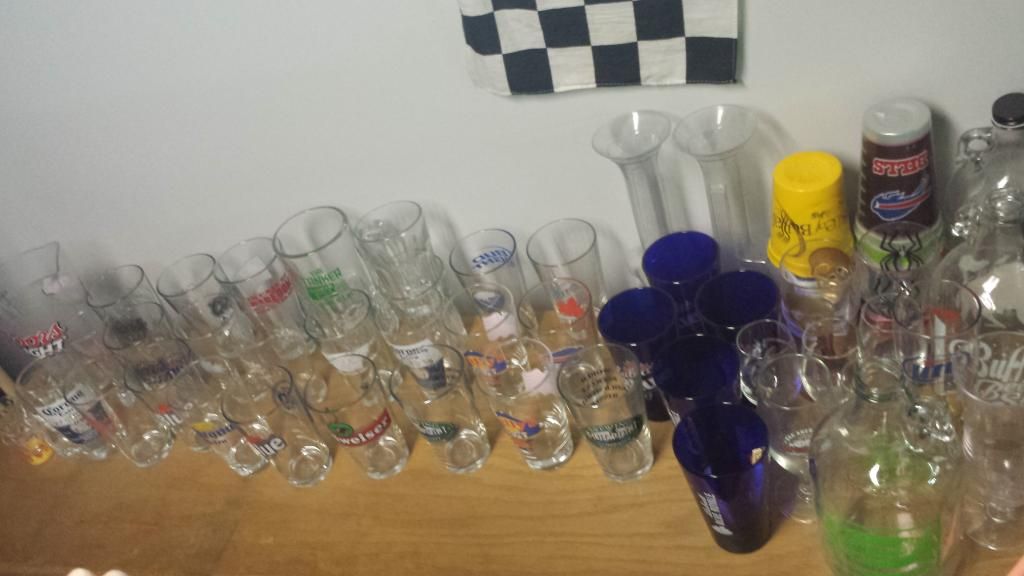- News and Features - Ratebeer
With all the different styles found in the world of beer, the question of serving temperature comes up fairly often. There are, however, very few absolute truths when it comes to proper serving temperature. Individual drinkers will have individual preferences and these might vary quite a bit from the generally accepted norms. So mainly this guide will focus on the accepted norms, and you as the drinker can take them to heart to any degree you wish.
The first thing that should be addressed, however, are two very common myths. The first is that beer needs to be served very cold. The macrobrewers want you to believe this, and here’s why. The sensation of coldness inhibits the tongue’s taste receptors. Since macrobrews started positioning their products based on any feature they could imagine besides taste, the need to neutralize taste became important. An alcohol delivery system doesn’t need taste. In fact, taste usually gets in the way. A cold refresher could be anything, and in fact alternatives like soda, iced tea or water generally have a less offensive taste than macrobrew. So again, numbing those tastebuds is important. As for what beer marketers mean when they say a beer “has a cold taste”, your guess is as good as ours. So no, beer doesn’t not need to be near frozen. Good beer in fact should not be near frozen.
The other myth is that English beer is served at room temperature, or “warm”. It’s not. It is served at cellar temperature, which is between 12-14C. Room temperature is 21C. That’s a big difference.
Beer is best served in between “ice cold” and room temperature. There are a lot of generalization made about beers of different colours, most of which are false. However, when it comes to temperature, colour seems to make a big difference. Lighter-coloured beers are generally best served cold. At the warmest end are the big, dark beers like Quadrupels, Imperial Stouts and Barley Wines. At cellar temperature are English-style beers and in the middle is just about everything else.
Very cold (0-4C/32-39F): Any beer you don’t actually want to taste. Pale Lager, Malt Liquor, Canadian-style Golden Ale and Cream Ale, Low Alcohol, Canadian, American or Scandinavian-style Cider.
[B]Cold (4-7C/39-45F): Hefeweizen, Kristalweizen, Kölsch, Premium Lager, Pilsner, Classic German Pilsner, Fruit Beer, brewpub-style Golden Ale, European Strong Lager, Berliner Weisse, Belgian White, American Dark Lager, sweetened Fruit Lambics and Gueuzes, Duvel-types
[B]Cool (8-12C/45-54F): American Pale Ale, Amber Ale, California Common, Dunkelweizen, Sweet Stout, Stout, Dry Stout, Porter, English-style Golden Ale, unsweetened Fruit Lambics and Gueuzes, Faro, Belgian Ale, Bohemian Pilsner, Dunkel, Dortmunder/Helles, Vienna, Schwarzbier, Smoked, Altbier, Tripel, Irish Ale, French or Spanish-style Cider
[B]Cellar (12-14C/54-57F): Bitter, Premium Bitter, Brown Ale, India Pale Ale, English Pale Ale, English Strong Ale, Old Ale, Saison, Unblended Lambic, Flemish Sour Ale, Bière de Garde, Baltic Porter, Abbey Dubbel, Belgian Strong Ale, Weizen Bock, Bock, Foreign Stout, Zwickel/Keller/Landbier, Scottish Ale, Scotch Ale, American Strong Ale, Mild, English-style Cider
[B]Warm (14-16C/57-61F): Barley Wine, Abt/Quadrupel, Imperial Stout, Imperial/Double IPA, Doppelbock, Eisbock, Mead
Hot (70C/158F): Quelque Chose, Liefmans Glühkriek, dark, spiced winter ales like Daleside Morocco Ale.
[/B][/B][/B][/B]



